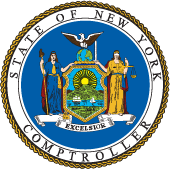The Technology Sector in New York City, October 2022
Technology sector employment in New York City increased by 33.6% (43,430 jobs) from 2016 to 2021 to reach a record high of 172,570 jobs. The city’s private sector lost 3.3% of jobs during this same period. Businesses in the tech sector also grew, accounting for 22.3 percent of the City’s total private firms added during the same period. Most of these firms consisted of fewer than 10 employees and contributed to the citywide growth in microbusinesses during the pandemic.
